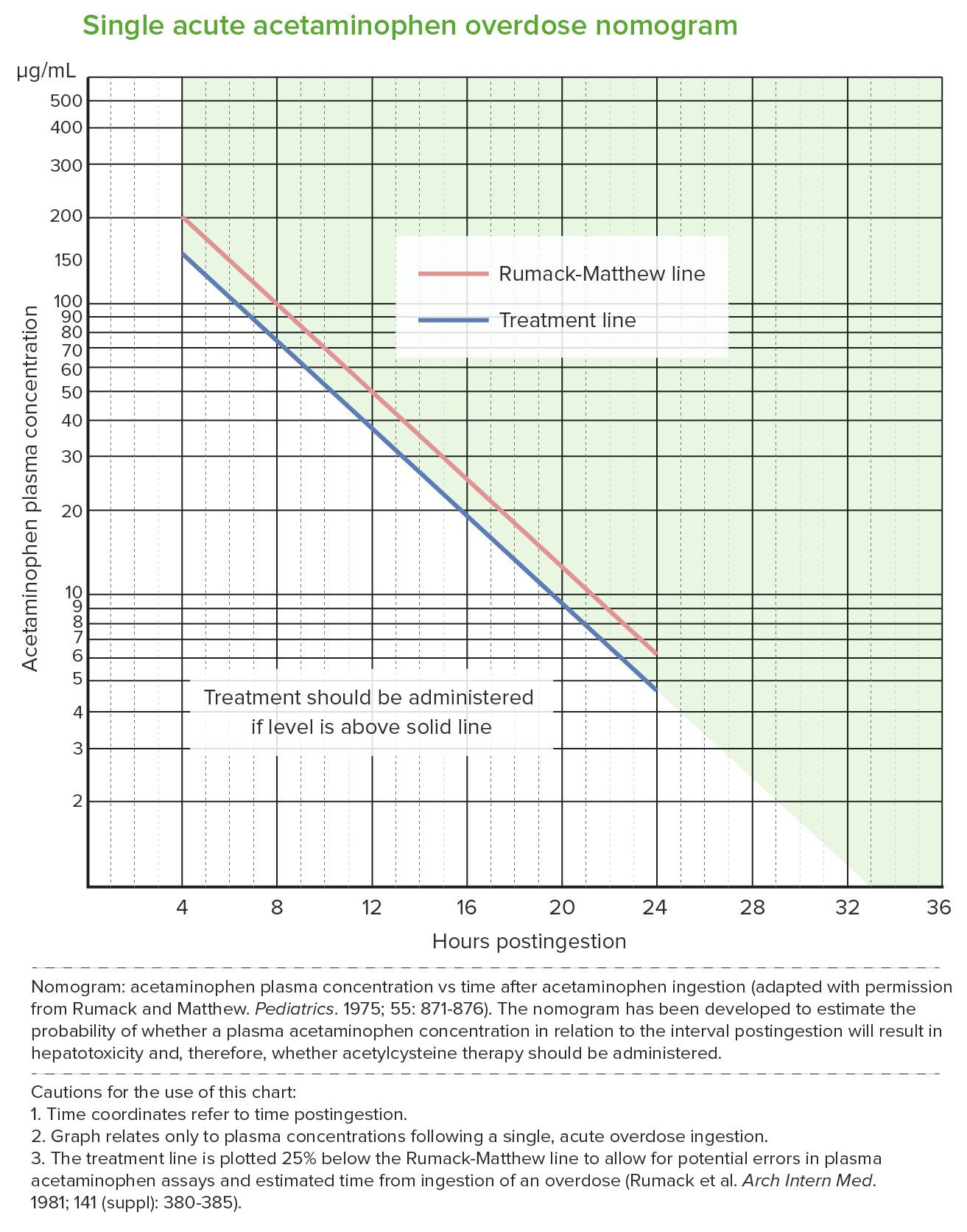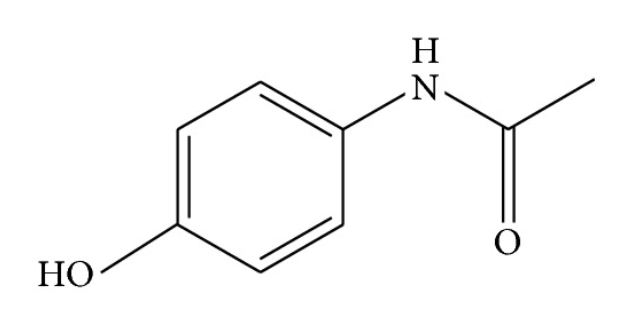Playlist
Show Playlist
Hide Playlist
Acetaminophen (Paracetamol) Overdose
-
Emergency Medicine Approach to Poisoning.pdf
-
Download Lecture Overview
00:01 All right. 00:01 So we're gonna talk a little bit about acetaminophen overdose which is actually a common and disturbing problem in the United States. 00:10 Acetaminophen is also known as paracetamol in other settings and it's a readily available over the counter drug that has highly lethality potential and produces very minimal symptoms at least in the initial phase. 00:23 So the way acetaminophen works or the way that toxicity works, I should say, is that the liver metabolizes the acetaminophen into a compound called NAPQI which is highly toxic. 00:36 Now in normal dozes of acetaminophen, your NAPQI is combined in the body with thiols that produces a non-toxic metabolite which is then eliminated. 00:46 However, in overdoses, your thiols stores are depleted and the toxic metabolite accumulates. 00:53 Now, the main effect of acetaminophen is liver injuries. 00:57 So in high dozes, acetaminophen can actually cause permanent liver failure and it’s one of the leading causes of liver transplantation in young people. 01:07 The antidote for this is called NAC or N-acetyl-cysteine and basically what it does, is it detoxifies NAPQI and decreases the production of it. 01:16 It’s a very, very effective antidote but it has to be given early. 01:20 It should be initiated within eight hours of the ingestion. 01:23 So this is very important. 01:24 You can't wait around to see if the patient is gonna have manifestations of liver failure. 01:29 You need to initiate treatment based on your clinical suspicion. 01:33 So there's a nomogram that helps guide our decision about whether to give NAC to patients with acetaminophen overdoses. 01:41 Note that the nomogram doesn't start until four hours after the ingestion. 01:45 So it takes four hours for GI absorption to be complete. 01:50 Meaning, we don't check a level until four hours after the ingestion. 01:54 After that point, depending on what level we get, we can differentiate between high risk of toxicity and low risk of toxicity, and if the patient is above that threshold for toxicity, we wanna go ahead and treat them. 02:09 All right. 02:10 So obviously, I couldn't cover every possible poisoning. 02:13 So I tried to give you some essential principles. 02:16 It's really important to know your toxidromes, so that you can recognize what drug class your patient might have been exposed to and narrow your differential diagnosis. 02:25 Otherwise, you're gonna be left trying to figure out the individual properties of lots of different drugs which is not really realistic. 02:32 You wanna make sure you externally decontaminate your patient in order protect both yourself and them. 02:38 You wanna provide aggressive support of care with the real focus on the ABCs. 02:43 You wanna recognize any potential high toxicity or high lethality ingestions and get help. 02:49 You wanna consider GI decontamination, especially in patients with the high risk of morbidity or mortality from their toxic ingestion. 02:56 But remember to always protect their airway when you do that. 03:00 And then you wanna be aware of antidotes and use them when they're available and indicated.
About the Lecture
The lecture Acetaminophen (Paracetamol) Overdose by Julianna Jung, MD, FACEP is from the course Toxicologic and Environmental Emergencies.
Included Quiz Questions
What is the acetaminophen metabolite that is highly toxic and causes hepatic injury?
- N-acetyl-p-benzoquinone-imine (NAPQI)
- N-acetyl-p-aminophenol
- Acetyl-p-aminophenol glucuronide
- Acetyl-p-aminophenol sulfate
- Acetyl-p-aminophenol glutatione sulfhydryl
What is the antidote for acetaminophen overdose?
- N-acetylcysteine
- Flumazenil
- Physostigmine
- Atropine
- Fomepizole
Customer reviews
5,0 of 5 stars
| 5 Stars |
|
5 |
| 4 Stars |
|
0 |
| 3 Stars |
|
0 |
| 2 Stars |
|
0 |
| 1 Star |
|
0 |






